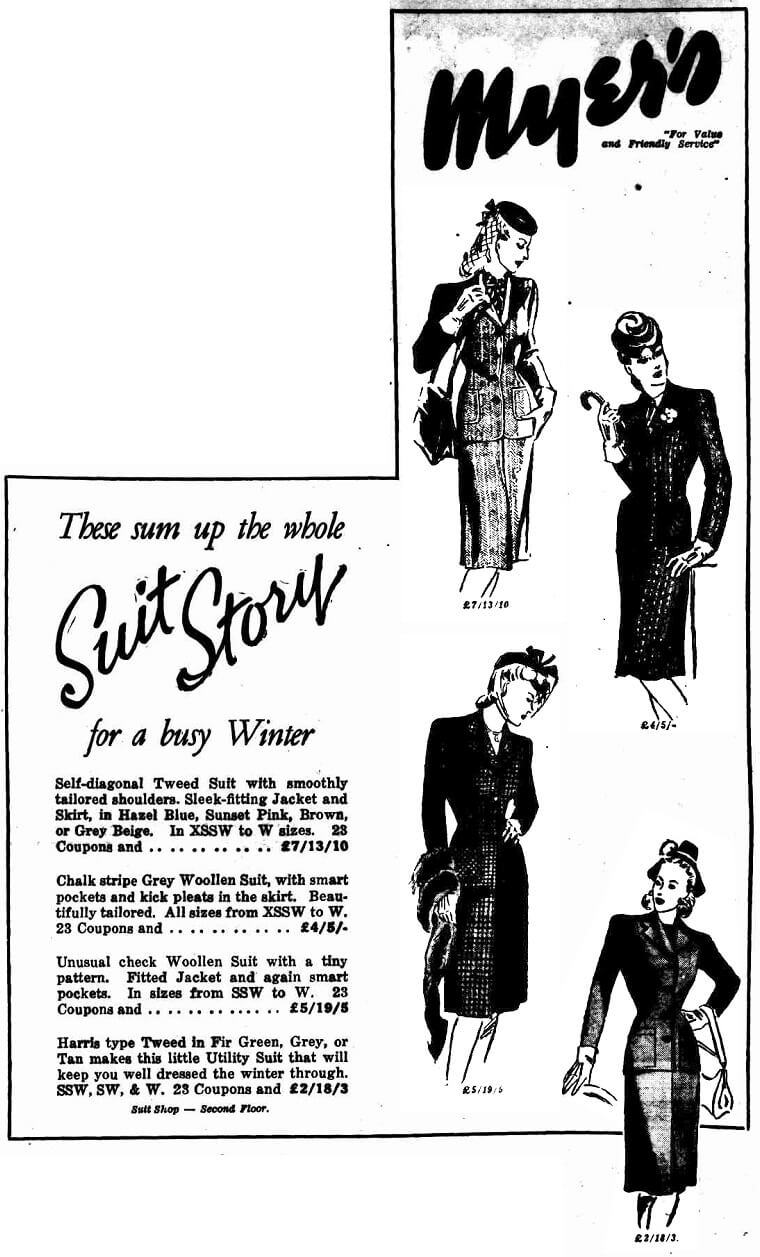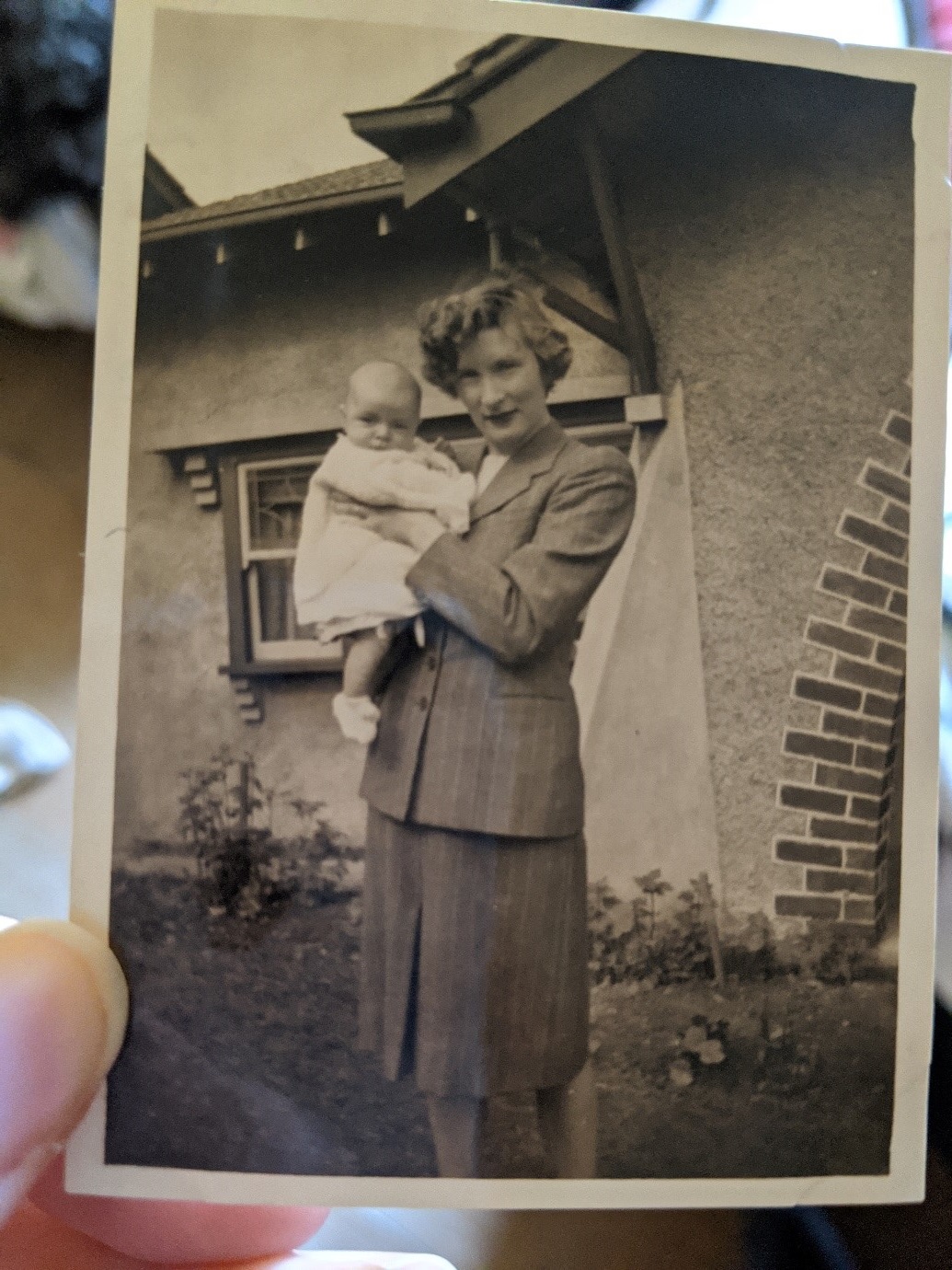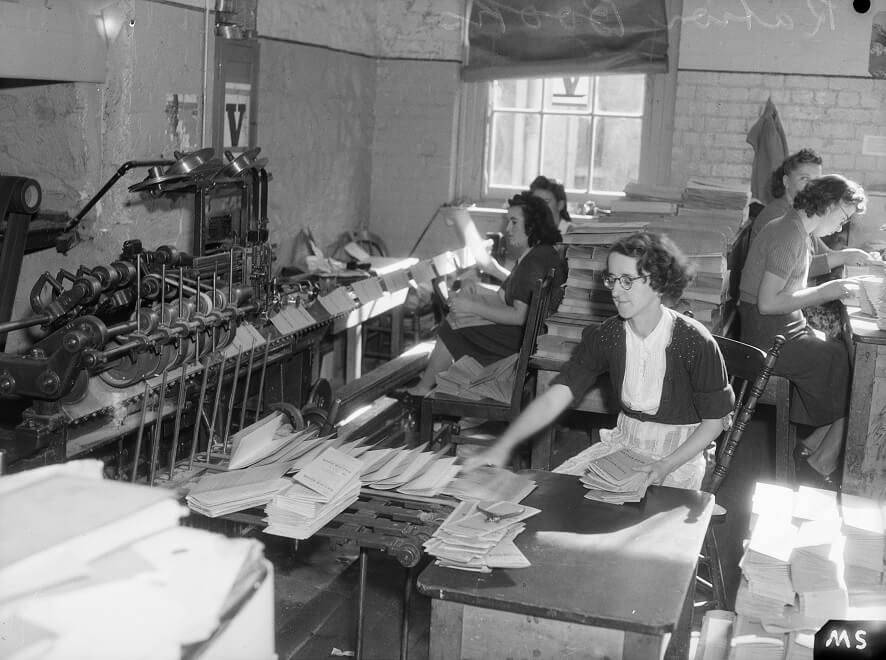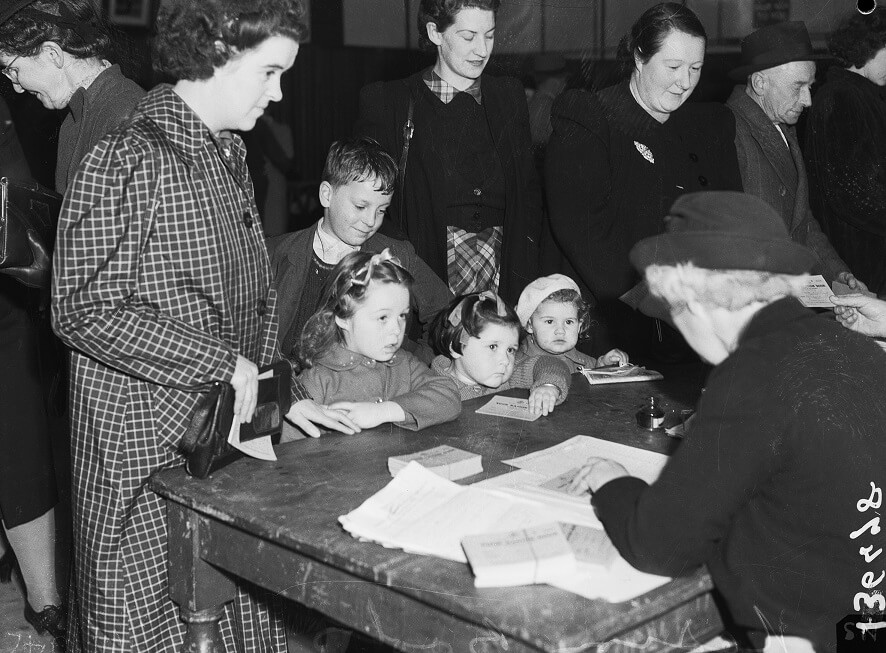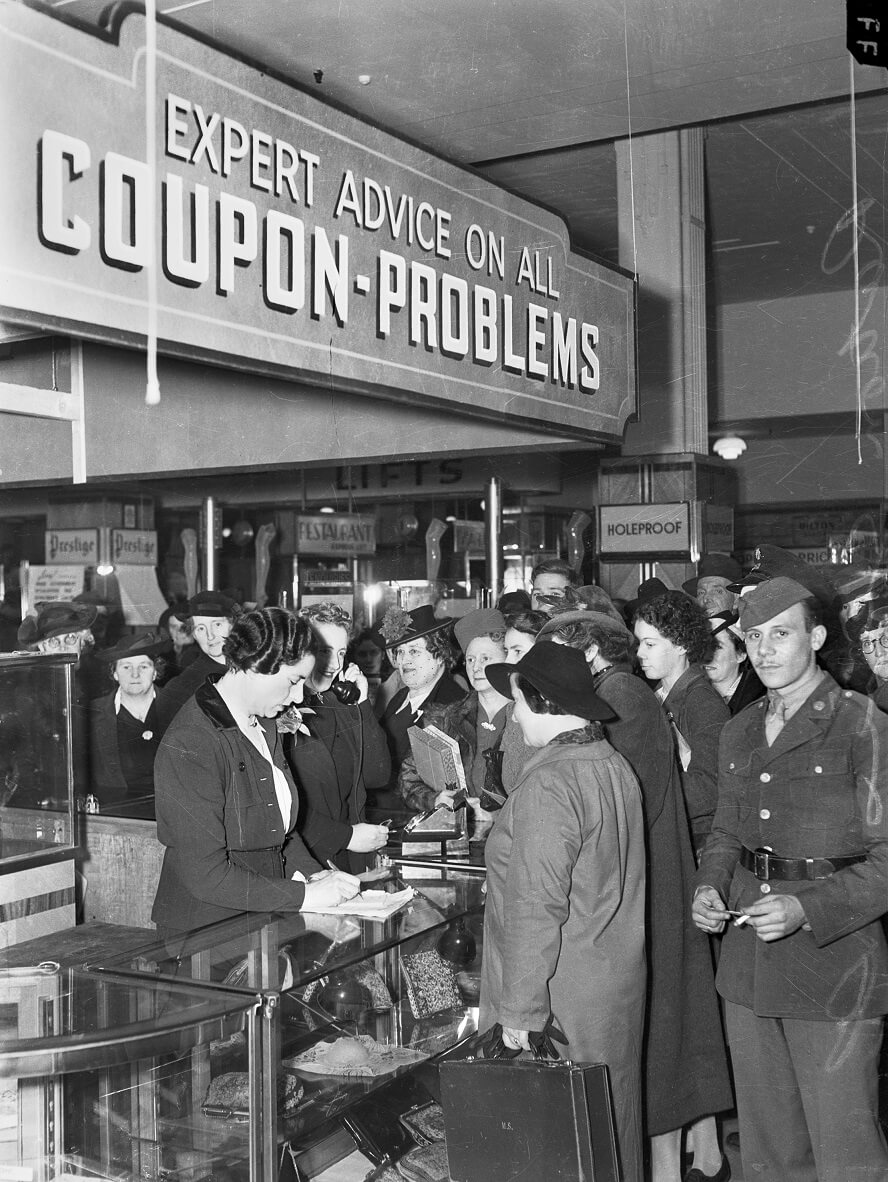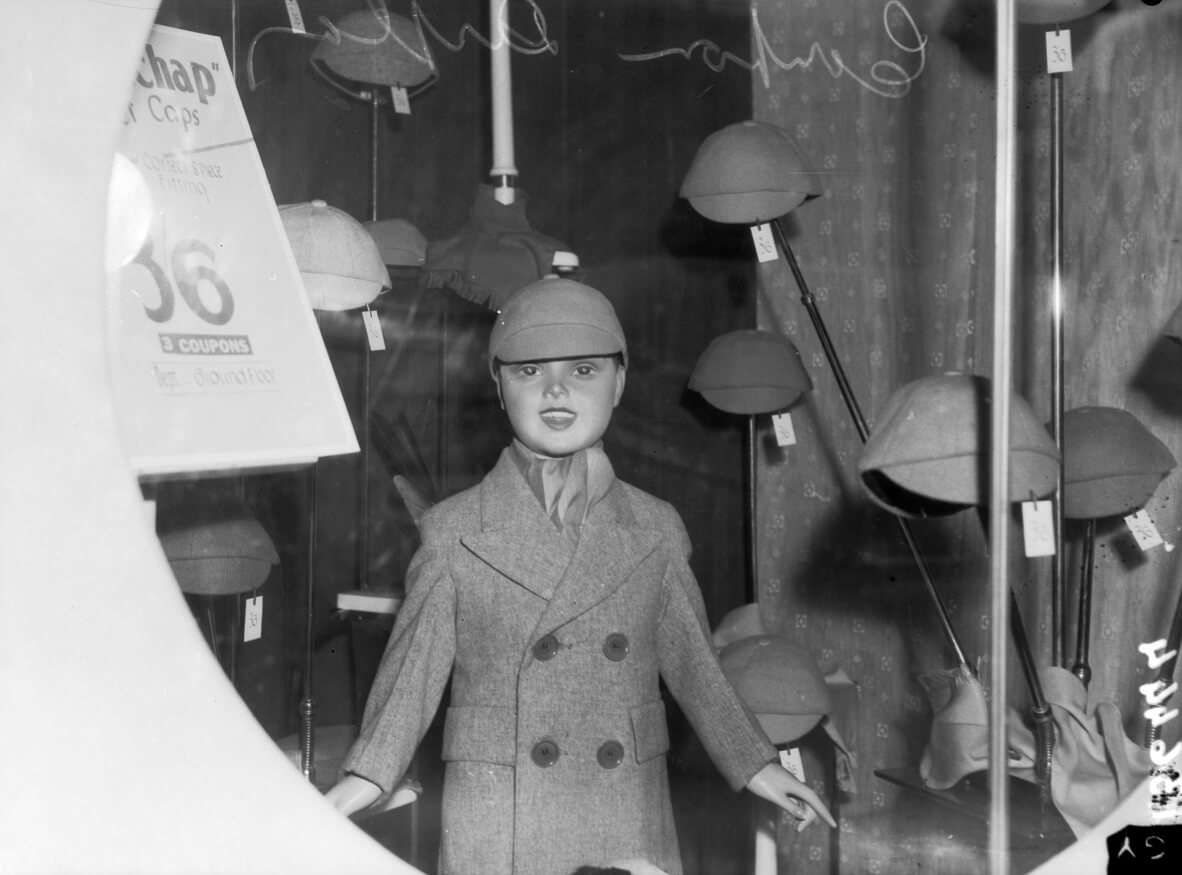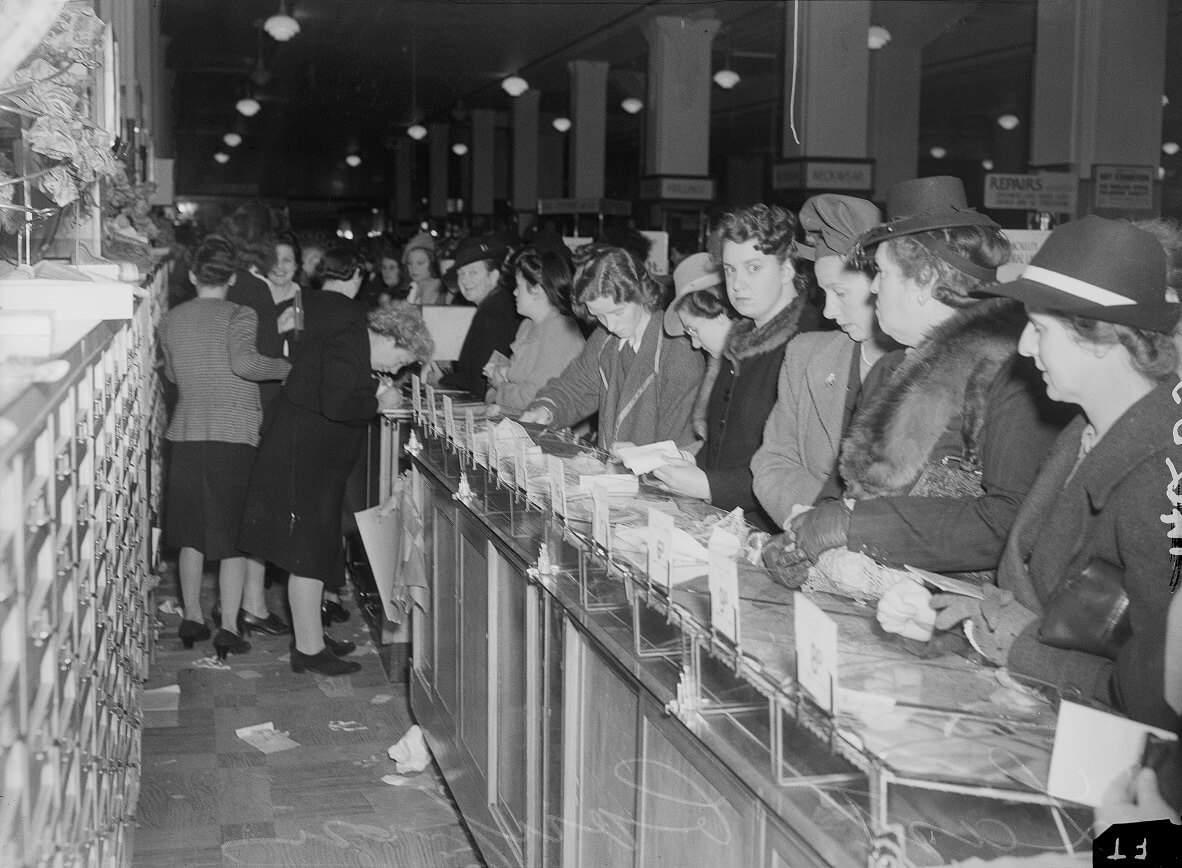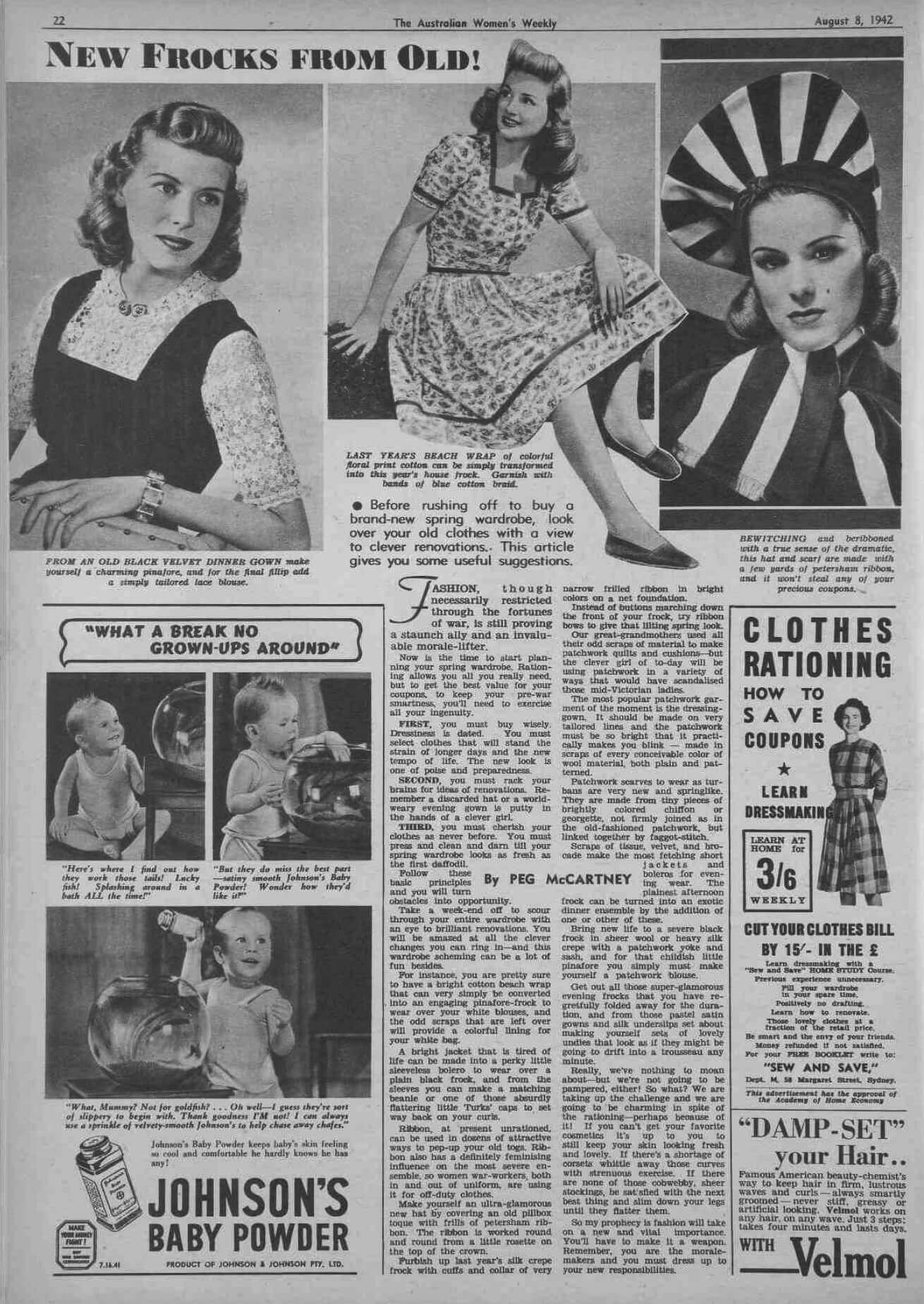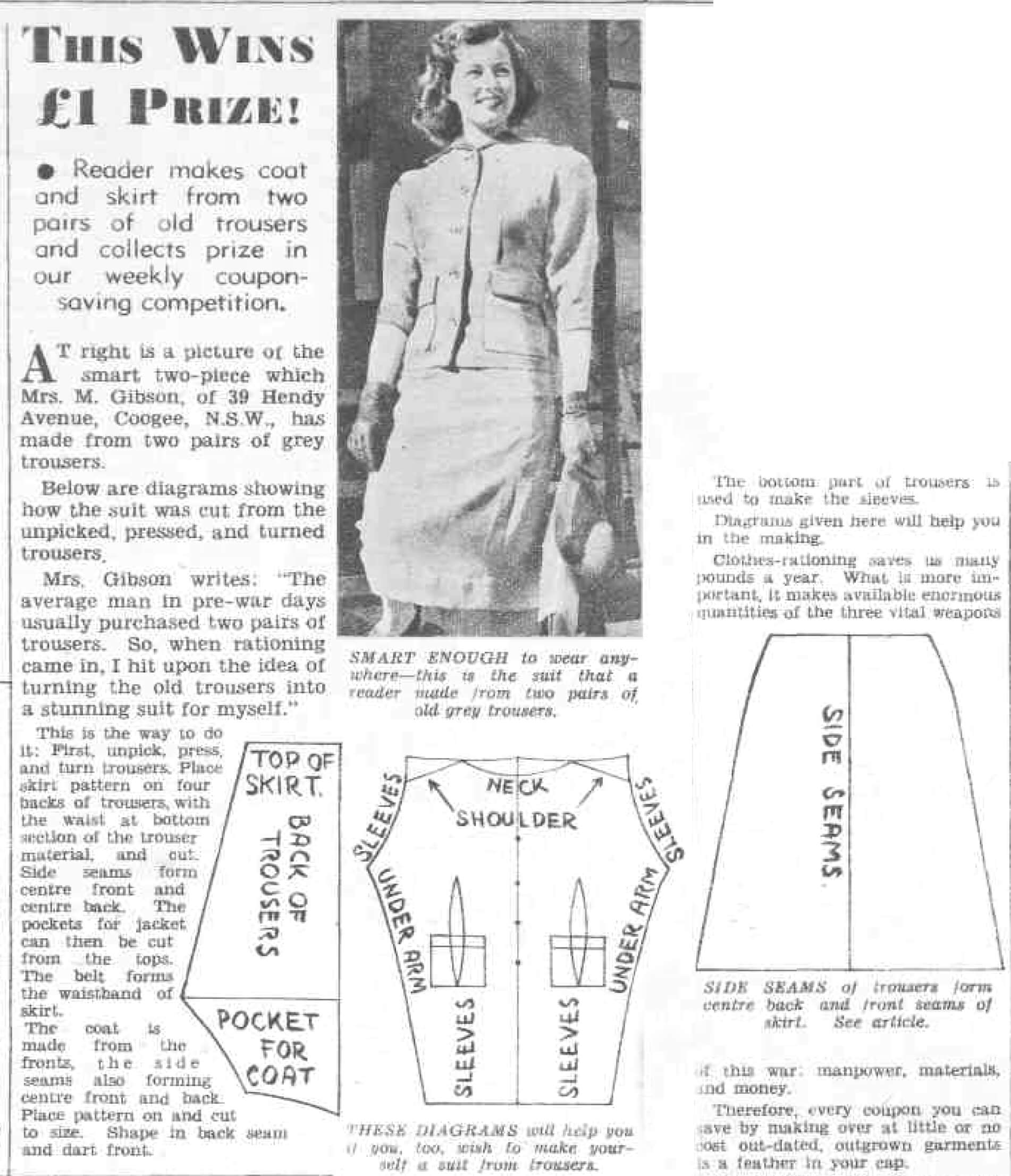There were retail quotas on many goods, including clothing, but the Commonwealth also stepped in directly, issuing regulations on permissible fashion items and styles. Magazines like the Australian Women’s Weekly helped to publicise these styles and to support the new economical approach to fashion. As a result, women’s dress styles in the early 1940s were relatively plain, with less fabric in the skirts. Hems sat just below the knee – shorter than they had been before. Trimming in the form of pleating, tucking and embroidery was strictly limited and the manufacture of dinner gowns, other ‘fancy’ clothing and children’s party clothes was banned. Men’s shirts were made without tails. The aim was to save one million yards of fabric per year from women’s clothing alone.
Advertisement for women’s suits, Myer 1944.
Reproduced courtesy National Library of Australia
Clothes are rationed
The Australian Government first contemplated rationing clothing as early as 1941, but was not in a position to implement it immediately. However by June 1942 they had printed enough ration coupon books for the civilian population and rationing of clothing was introduced on 12 June.
Employees of the Government Printing Office prepare ration books for stapling, Melbourne, 1942.
Reproduced courtesy Australian War Memorial
The entire family lines up at the ration book issuing centre, Melbourne, 1942.
Reproduced courtesy Australian War Memorial
Every adult Australian citizen received a ration book, with additional allowances for children. Used coupon books were exchanged for new ones annually. For perhaps the first and only time, all Australian families had the same access to food and clothing.
The first attempts at rationing saw shoppers benefit in some unintended ways. The exchange rate for ration coupons initially made no explicit reference to the value of some items. Four coupons were required for a pair of stockings for example, and 12 for a dress. Canny shoppers immediately sought out better-quality clothing, and no doubt some women managed to buy clothes they could not usually afford. But the opportunity was short-lived: some months later the exchange rate was modified to require more coupons in exchange for more expensive clothing items. Shoppers soon became adept at working out how to get the best value for their clothing coupons, though clothing growing children must have caused particular anxiety. To help with the arithmetic, shop windows helpfully listed the number of coupons required for items, while some of the larger shops established enquiry centres for any bewildered shoppers. To judge from photographs, they were well patronised! Nevertheless, since all families were treated equally in terms of ration coupons, the war years may have provided poorer families with a unique opportunity to buy clothing normally beyond their means.
An enquiry office was set up in a Melbourne city store to give customers advice on rationing and coupons for food and clothing, June 1942
Reproduced courtesy Australian War Memorial
A window display in a city shop shows the price tag and number of coupons required to purchase a boy’s overcoat and cap, Melbourne 1942.
Reproduced courtesy Australian War Memorial
Ration coupon books were exchanged annually and evidently unused coupons could not be credited. Here women line up at a shop counter anxious to exchange their remaining coupons before the next issue.
Reproduced courtesy Australian War Memorial
Sewing at home
Those who could sew had a huge advantage. Although fabric was also rationed, and the available range was limited, competent dressmakers could save themselves many coupons. ‘Making do’ was the order of the day. Tablecloths and other napery was turned into quite respectable underclothing, until rationing of those goods was also introduced in July 1943. Dresses from previous years could also be refashioned, as the Australian Women’s Weekly and organisations like the Housewives’ Association pointed out. ‘Hand-me-downs’ for children, a fact of life in poorer families, became more usual in wealthier households too, as everyone tried to manage within their coupon limit. Wartime brides faced the greatest challenges. Those lucky women working in parachute factories could sometimes buy a bit of flawed or left-over parachute silk, which was carefully hoarded until needed. Other families pooled their coupons to allow for the purchase of a wedding dress, or the fabric to make one, and many such dresses were then shared around, altered to fit other family members. Sometimes it was a matter of making the best of what was available. When Lillian Dorgan married in 1946 she wore a dress in a size 14, though her normal size was an eight. The dress was partly padded out to fit!
‘New frocks from old!’, Australian Women’s Weekly, 8 August 1942.
Reproduced courtesy National Library of Australia
On the same page was an article promoting dressmaking lessons as a means of saving ration coupons.
The Australian Women's Weekly, 22 August 1942.
Reproduced courtesy National Library of Australia

